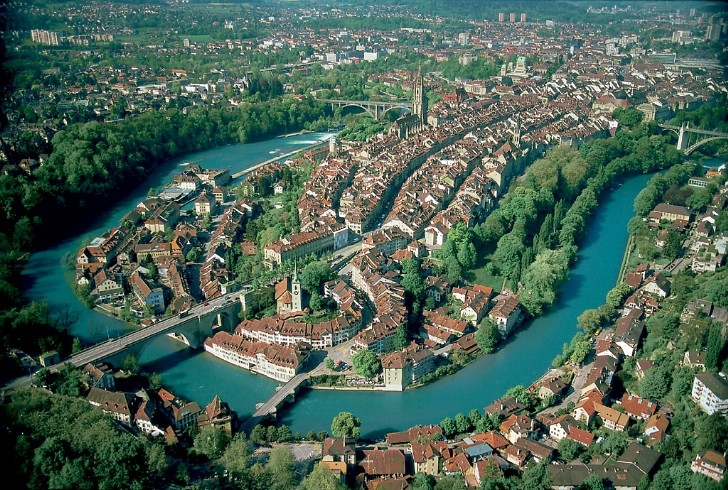
Photo credit: http://upload.wikimedia.org/wikipedia/commons/8/8d/Switzerland_satellite_enhanced.jpg
For my final post I chose to do Switzerland. I picked Switzerland because I know absolutely nothing about it and it's ranked highly as one of the best places to live in the world.
Facts about Switzerland:
- Switzerland has a population of around 8 million and the capital city of Switzerland is Bern.
- The currency in Switzerland is the Swiss Franc (CHF).
- Chocolate is one of the biggest exports in Switzerland. Lindt chocolate is one of their most famous brands of chocolate.
- Switzerland has one of the lowest crime rates of all and according to the Economist Intelligence Unit's research, Switzerland is the best place in the world to be born due to high quality of family life, great employment, marriage equality etc.
- The average age of a woman when she has her first child is 30 years old, this is one of the oldest ages in Europe to have a first child.
- They speak 4 languages in Switzerland: German, Italian, Rhaeto-Romantsch and French.
- The largest particle physics laboratory (CERN) is situated near Geneva on the Swiss-French border.
- Switzerland's main source of domestic power is via hydroelectric power stations. This makes hydro-electric power the country's most important source of renewable energy.
- The average swiss person eats 10 kilos of chocolate a year.
 |
| Lake Silvaplana |
 |
| Alphorns |
 |
| Bern, capital city of Switzerland.
In Switzerland there are 3 primary geographic regions: there is the Jura (10%), the Alps (60%) and the Swiss Plateau (30%). The typical climate of Switzerland depends on where you are. In the north of Switzerland the climate is moderate. Winters can be cold and summers usually are sunny and warm. In the mountainous areas of Switzerland the temperatures drop below freezing especially in the winter months. Switzerland is one of the top skiing holiday destinations and when there is no snow its also a popular hillwalking destination.
There are 26 cantons/sections to Switzerland and some vary to others. Some speak different languages like the German cantons in the centre, east and north to the Italian ones in the south. Different languages have a big impact on food, culture and architecture so you can imagine how different the cantons are. In Switzerland, health care is available, affordable and high in quality. There is a really good transport system throughout Switzerland making it easy to commute and travel around the place. Credits: http://upload.wikimedia.org/wikipedia/commons/d/d4/2011-08-01_17-39-33_Switzerland_Segl-Maria.jpg http://upload.wikimedia.org/wikipedia/commons/6/66/Alphorns_Grindelwald.jpg http://www.transitionsabroad.com/publications/magazine/0507/living_in_switzerland.shtml http://www.eupedia.com/switzerland/trivia.shtml |










_scavenging_on_whale_carcass_-_journal.pone.0060797.g004-A.png)


